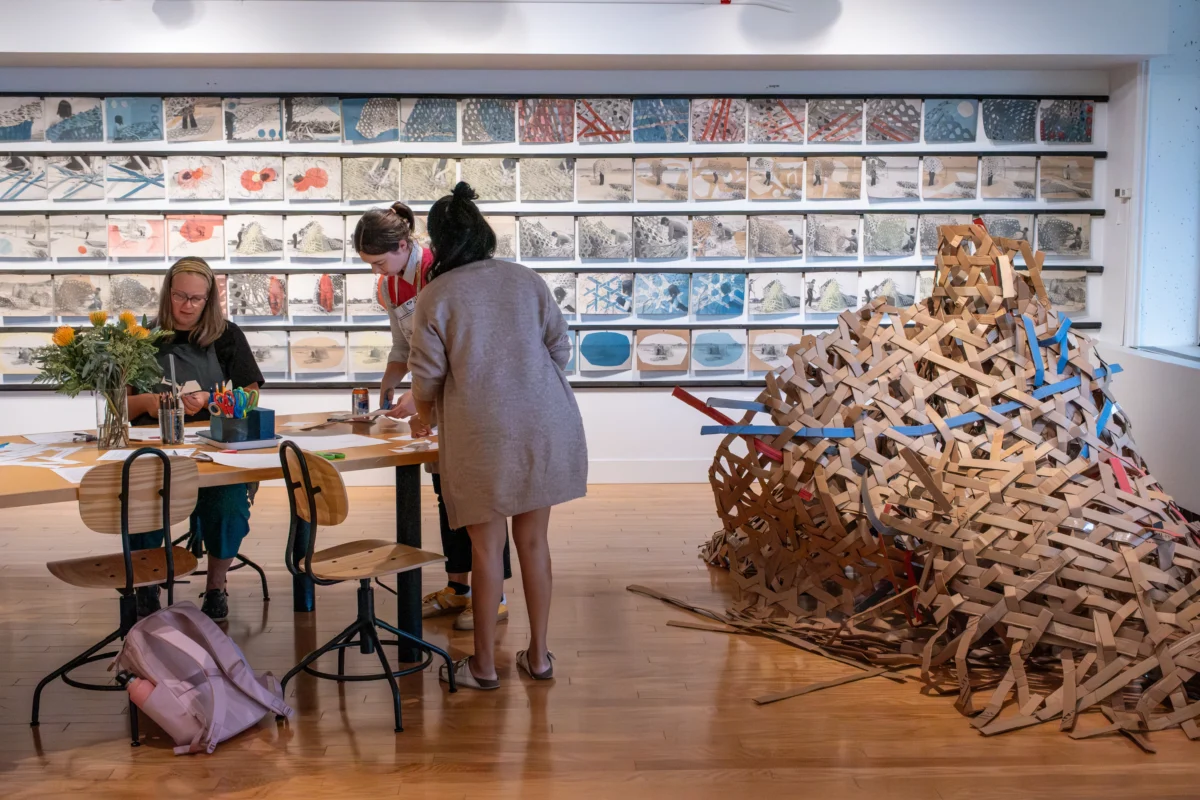Inspired by early educational theories, MIT student Coco Allred creates a unique learning space inside the art gallery
A new exhibition, “Primacy of Shape,” by Coco Allred (SmACT ‘26) explores the use of shape through the creation of prints, artist’s books and films, drawing inspiration from the theories of 19th-century German pedagogue Friedrich Froebel, the inventor of the kindergarten. Part classroom and part art studio, the gallery is transformed into an experimental learning space, animated by a colorful variety of original artworks.
From a pop-up art gallery to a mobile drawing workshop series, Allred has long been interested in designing alternative spaces for learning. The artist first became interested in education while working as a teaching artist in Philadelphia. As a result of this experience, she began researching issues like the lack of green spaces and the pressures of standardized education in contemporary schools. This more industrial model of education diverged sharply from the more holistic practices pioneered by Froebel, where natural wooden toys in the shapes of spheres and cylinders help children learn through play.
As a sculptor, shape is how Allred engages with the world. “I think shape is something that’s often lost the further along one gets into education,” she says, “But there’s a way of knowing and making connections that can be done through aesthetic experience,” referencing how understanding shape is important not only in disciplines like physics and mathematics, but even to connecting with the natural world.
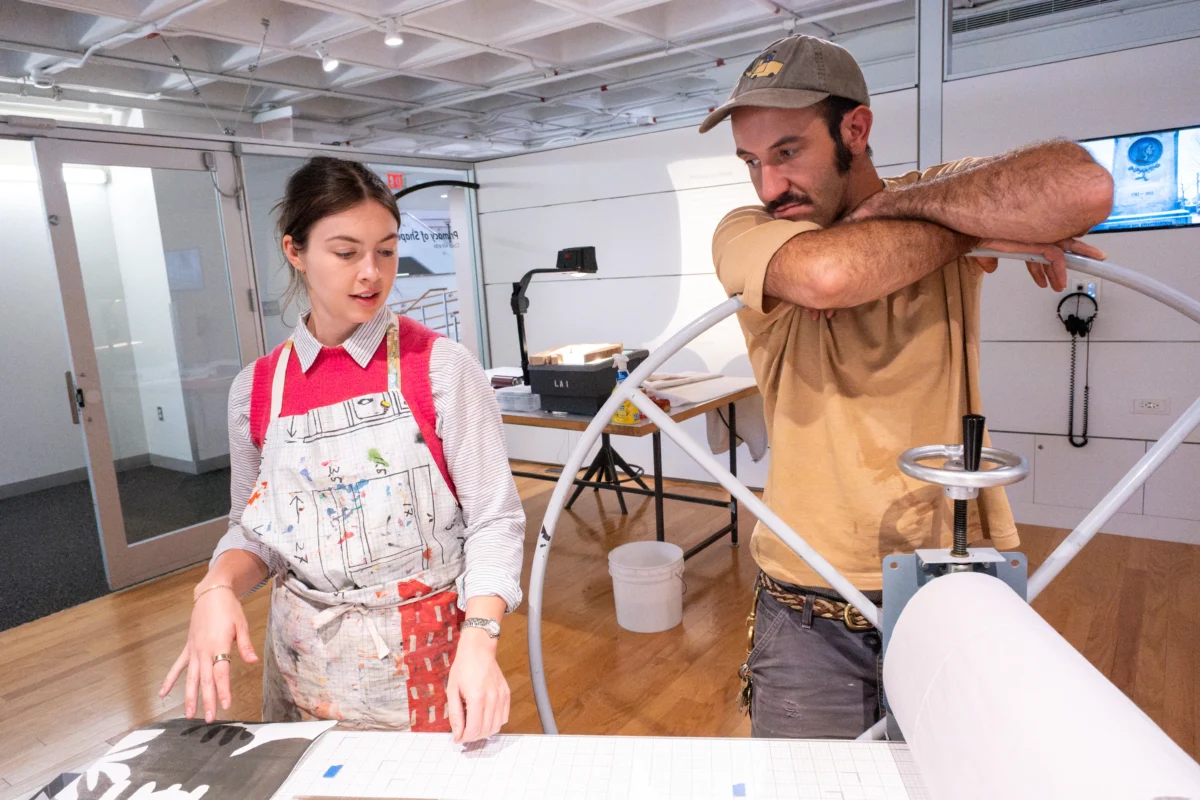
Creating an Alphabet of Shapes
At MIT, Allred created an interactive space within the Weisner Student Art Gallery, bringing together drawing, printmaking and stop-motion animation. “The exhibition is really designed to be an extension of my studio,” she says, “I’m thinking of it as this image making circuit.”
Over the course of the show, she is working on a stop-motion film using a giant cardboard weaving–a fundamental part of a hands-on Froebel education that later inspired the Bauhaus art movement–as its source image, in addition to screening her film Recursive Gardens. She will also run a series of printmaking workshops that explore shape, culminating in an accordion-style book. “You can find books on shape for children,” she says, “but I’ve really struggled to find one for adults.” The book will function like an alphabet book, she notes, but for shapes, as a way of cataloguing our relationships to the forms encountered in our daily lives.
She hopes these small workshops will inspire intimate conversations on how we relate to shape in different disciplines, from mathematics to the visual arts. “The interesting part of being at MIT is asking, as an outsider, how are mathematicians thinking about shapes?” The resulting publication will be an archive of forms, incorporating a multitude of different experiences into a communal product. “In the accordion book, the page just stretches on,” she says, “People will be making one piece where there are these folds, like sections of pages, but working together.”
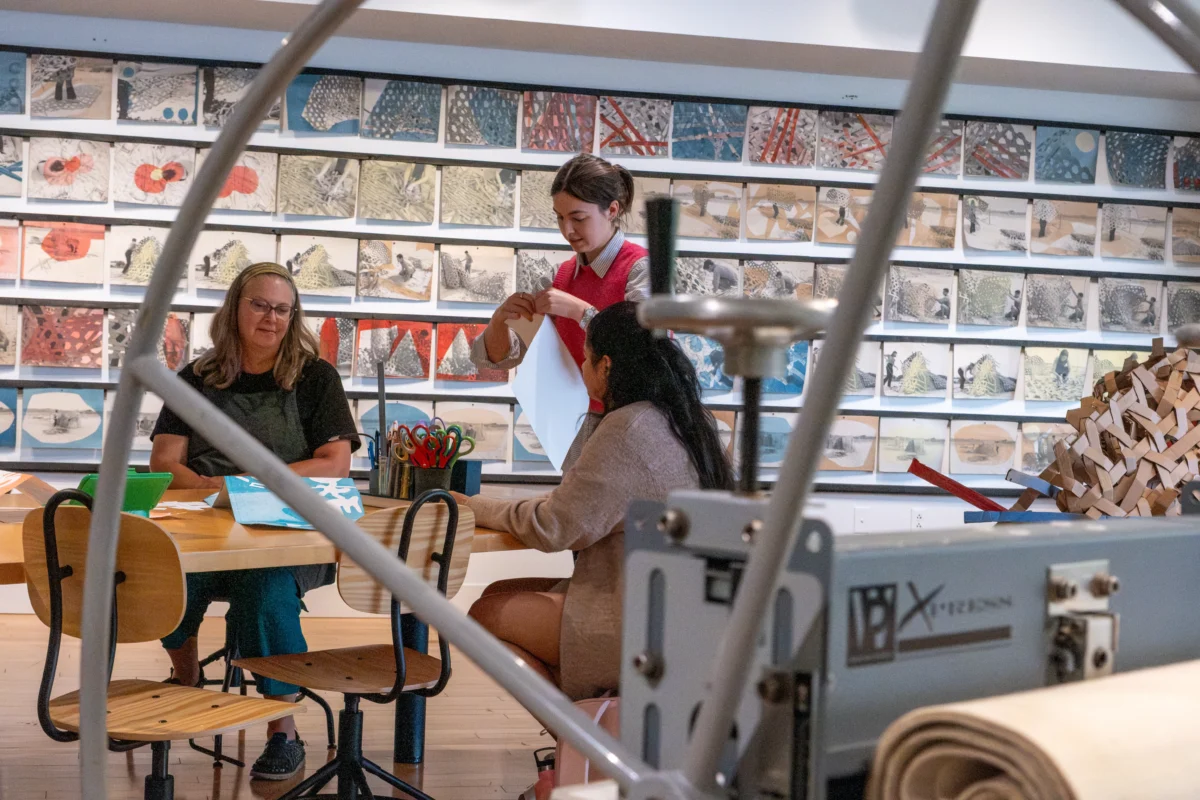
The Power of Close Looking
Allred views shapes as relational—the way they look is, in part, a function of a viewer’s unique perspective. For example, she says, something as familiar as the roof of a house can appear entirely different depending on where you stand. And while we often encounter shapes in simplified, standard forms, Allred encourages visitors to look deeply, engaging with the intricacies of shape through processes like drawing or cutting with scissors. Through these acts of the eye and hand, she says, “you’re having a relationship, which is one of empathy and of presence.” It is in that act of close looking that shapes gain specificity and weight. When you observe a flower in nature, Allred says, it’s far more particular and nuanced than generic illustrations often suggest.
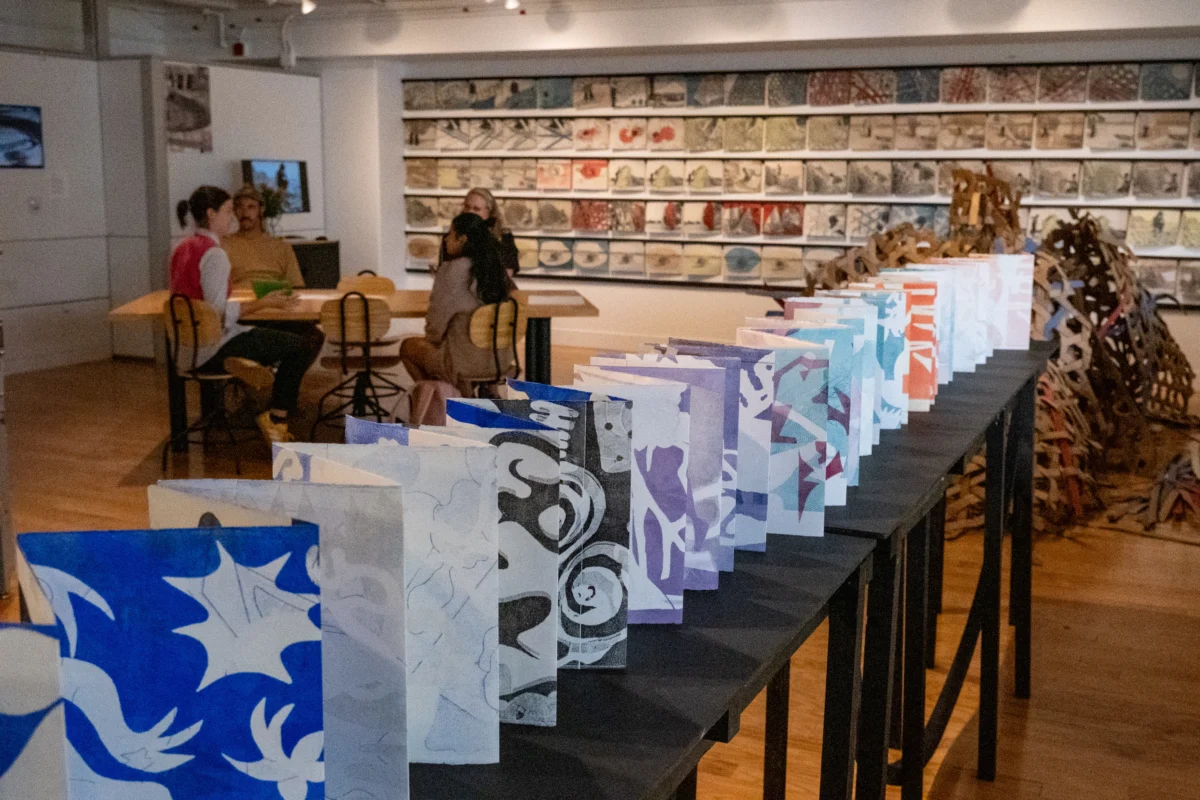
Creative Composting
Throughout Allred’s work, the process is just as important as the final product–the work is constantly evolving. “I’m interested in how shapes come apart and come back together,” she says. She recirculates and reanimates the early ideas of Froebel not as a reenactment, but a way to adapt these ideas for the present. The ideas of older generations are not just waste or ruins, she says, but are materials to be used by new generations–a form of creative composting, both conceptually and physically. “Even in the course of making this exhibition,” she says, “I took apart other sculptures to make the sort of infrastructure for the new things. I like that old form is embedded within this new form.” This approach requires both an appreciation for inherited materials and a willingness to let things grow and change.
With this new exhibition. Allred hopes to instill a sense of care and responsibility in visitors, but also, as in these early educational models, a radical sense of play. “I’m always trying to locate a sense of wonder,” she says.
“Primacy of Shape,” by Coco Allred (SmACT ‘26) is on display in the Wiesner Student Art Gallery from September 2–29, 2025, from 1:00–6:00pm, Tuesday–Friday.
Receptions:
September 16, 2025 / 5:00–7:00pm
September 29, 2025 / 5:00–7:00pm
Alphabet of Shapes Printmaking Workshops:
Sunday, September 7 / 2:00–4:00pm
Wednesday, September 10 / 4:00–6:00pm
Saturday, September 13 / 2:00–4:00pm
Wednesday, September 17 / 4:00–6:00pm
Sunday, September 21 / 4:00–6:00pm
Tuesday, September 23 / 5:00–7:00pm
Saturday, September 27 / 2:00–4:00pm
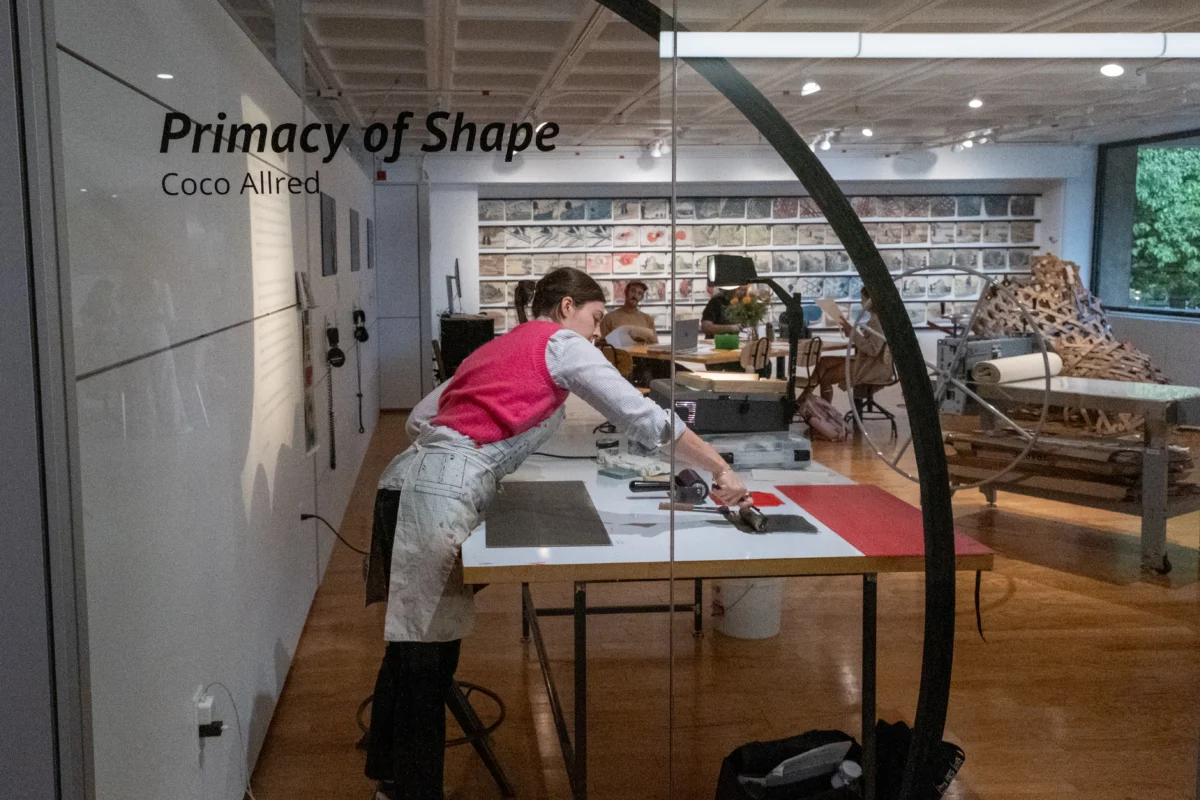
Written by Anya Ventura
Editorial direction by Leah Talatinian

